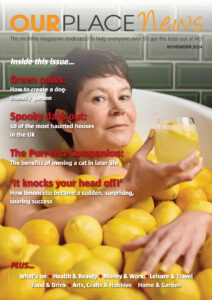Chartered physiotherapist Louise Rogerson, Chief Operating Officer of Howz, shows how technology can aid older people in retirement.

As a physiotherapist, I have seen first-hand the challenges we face in staying fit as we get older.
Retirement can be a fantastic opportunity to engage with new hobbies and interests, but also to focus on staying well. Recently, technologies have emerged that are designed to aid those of retirement age in keeping fit, and when used properly they can make a real difference.
Retirement marks the beginning of a new chapter in life, but can also bring along a new set of challenges. It can be a shock to suddenly find yourself without the regular routine of the working week. It also becomes increasingly important to keep yourself active, particularly through finding new ways to keep busy and opportunities to socialise.
In recent years, many new technologies have been designed with the intention of empowering older people to face these challenges and opportunities in their retirement, while ensuring this new chapter is as healthy and stress-free as possible.
Smart home technology has become a key domain for developing innovative products to help us as we age. As older people may spend more time at home during retirement, new technologies that help make home life easier are revolutionising the way we age, particularly in allowing older people to feel more empowered to live independently.
Spending more time at home often involves creating new routines. Using technology to monitor these patterns can provide helpful information about our health and lifestyle. Howz, for example, is a smart home device that uses motion sensors and smart sockets to learn about your daily regime – what time you wake up, take your tea, leave the house, etc.
It then analyses this information to notice any changes to your routine that may signify a problem. For instance, if you aren’t as active as normal, or if you are waking up later each day, these small changes in your day may signal an oncoming health condition.
Especially when living alone, these slight changes might have otherwise gone unnoticed; detecting these changes early on can thus make a significant difference in managing oncoming health conditions before they become too advanced.
To give family and friends peace of mind, data collected by these devices can also be shared with them. For example, they could check in to ensure that their ageing parents have had their morning tea or have been moving around through the day.
This hands-off, unobtrusive approach to checking in allows older people to maintain a sense of independence while still having the security of knowing they are being monitored, and loved ones are able to detect any potential problems.
Many other devices exist that allow older people to monitor their overall health and provide this information to family members to demonstrate that they are doing well. Wearable fitness trackers, for instance, can monitor your heart rate and overall activity levels, as well as send alerts if they detect too much inactivity.
As we age, there is a greater risk of developing certain health conditions. Luckily, many technological innovations are being developed to either limit the severity of the conditions or, at the very least, to minimise the impact the symptoms can have on our day-to-day life.
Tovertafel, for example, is an innovation that projects a series of interactive light games onto a table that not only stimulates physical activity, but also reduces cognitive decline associated with mid to late-stage dementia.
The bright colours and extensive range of games provides significant cognitive, physical, and social stimulation and can help improve the quality of life for those living with dementia.
Many other gadgets exist that can lessen the impact of various health conditions and help older people regain a sense of normalcy. The GyroGlove, for example, uses gyroscopes to offer stability for users with hand tremors, making day-to-day tasks, such as eating, drinking, and writing, easier and more comfortable.
For people with hearing disorders, ReSound has designed hearing aids that can be controlled with greater ease through personal devices, such an iPhone or Android, iPad or Apple watch.
Smart home technology is changing the way in which people with long-term health conditions are able to live independently in their homes.
It may seem unnecessary for the average person to adjust their home’s heating system from their couch, or having motion sensors connected to lamps; however, for those with reduced mobility, these innovations may prove essential for allowing them to continue living at home independently.
Technological solutions are emerging to assist with various aspects of daily life – Roomba, the robotic vacuum cleaner, for example – and these technologies can be particularly useful as we age and completing these tasks becomes increasingly cumbersome.
These technologies not only allow older people to maintain a sense of independence, but also allow for them to focus on other more fulfilling and stress-free activities to keep them healthy and happy.
With recent advances in technology, new products are being developed specifically for people at various ages and stages of life. As a result, people entering and passing retirement age now have a wealth of options of products that can help them with their transition into older age.
While it can be challenging at times to adapt to advances in technology, it is important to acquaint yourself with the products available and what may work well for you.
Entering retirement can be a busy time, so it is important to discover all of the many innovative solutions available now while you are still able, as it may be much more difficult in the future, when relying on these types of products becomes a necessity.
This new phase of life need not be stressful: taking advantage of new technologies is a fantastic way to empower ourselves to enter this new phase confidently while giving ourselves peace of mind.
(Article source: Choice)

